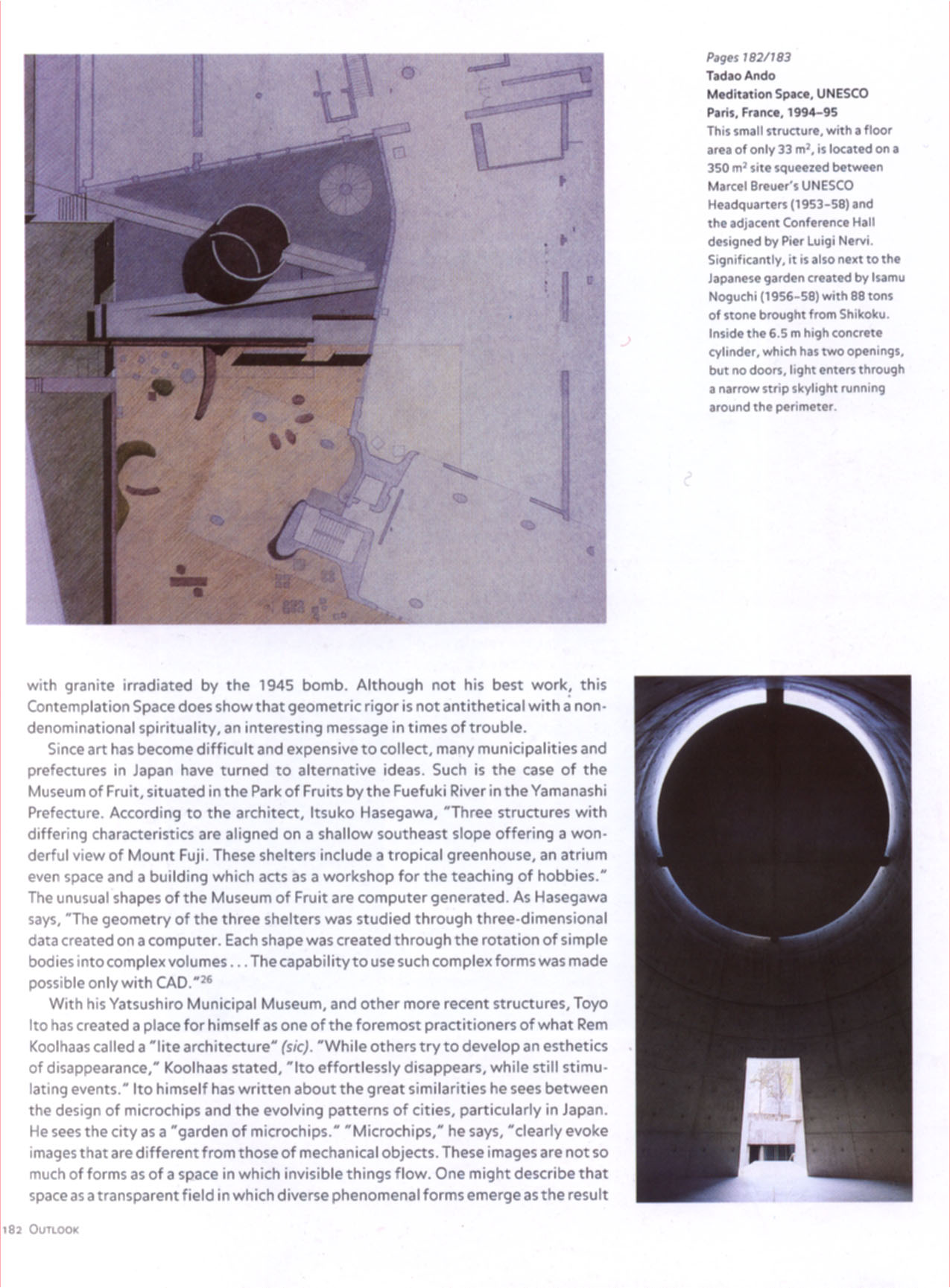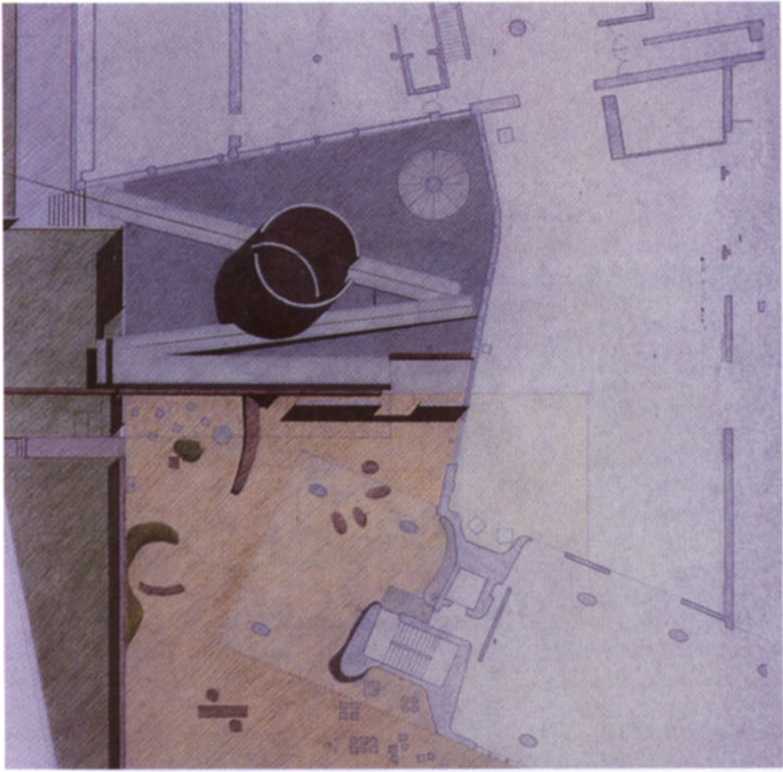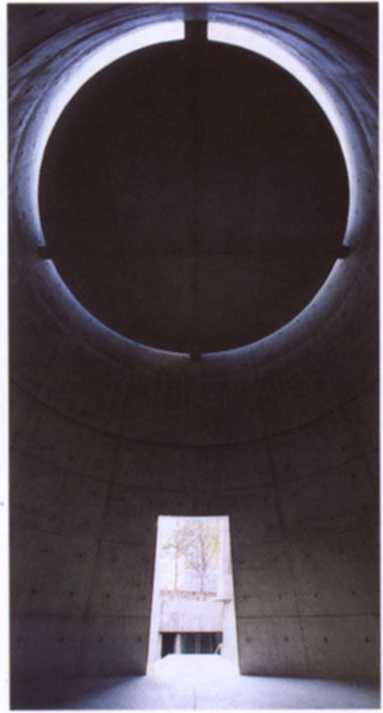New Forms Taschen 171


Pi ges 182/183 Tadao Ando
Meditation Spać*. UNESCO Pan*, Franca, 1994-95
This smali structure, with a floor area of only 33 m3, i* located on a 350 m3 site squeezed betwecn Marcel Breuer'* UNESCO Headquarter* (1953-58) and the adjacent Conference Hall designed by Pier Uuigi Nervi. Significantly, it i* also next to the Japanese garden created by Isamu Noguchi (1956-58) with 88 ton* of stone brought f rom Shikoku. Inside the 6.5 m high concrete cylinder, which ha* two openmgs, but no door*, light enter* through a narrow strip skyłight running around the perimeter.
with granite irradiated by the 1945 bomb. Although not his best work, this Contemplation Space does show that geometrie rigor is not antithetical with a non-denominational spirituality, an interesting message in times of trouble.
Since art has become diff icult and expensive to collect, many municipalities and prefectures in Japan have turned to alternative ideas. Such is the case of the Museum of Fruit, situated in the Park of Fruits by the Fuef uki River in the Yamanashi Prefecture. According to the architect, Itsuko Hasegawa, "Three struaures with differing charaaeristics are aligned on a shallow southeast slope offering a won-derful view of Mount Fuji. These shelters include a tropicai greenhouse, an atrium even space and a building which acts as a workshop for the teaching of hobbies." The unusual shapes of the Museum of Fruit are Computer generated. As Hasegawa says, "The geometry of the three shelters was studied through three-dimensional data created on a Computer. Each shape was created through the rotation of simple bodies intocomplex volumes... The capability to use such complex forms was madę possible only with CAD."26
With his Yatsushiro Municipal Museum, and other morę recent structures, Toyo Ito has created a place for himself as one of the foremost practitioners of what Rem Koolhaas called a 'lite architecture" (sic). "While others try to develop an esthetics of disappearance," Koolhaas stated, "Ito effortlessly disappears, while still stimu-latmg events." Ito himself has written about the great similarities he sees between the design of microchips and the evolving patterns of cities, particularly in Japan. He sees the city as a "garden of microchips." "Microchips," he says, "dearly evoke images that are different from those of mechanical objeets. These images are not so much of forms as of a space in which invisible things flow. One might describe that space as a transparent field in which diverse phenomenal forms emerge as the result
181 Outlook

Wyszukiwarka
Podobne podstrony:
New Forms Taschen 168 Outlook Page 179 Tadao Ando Meditation Spać*. UNESCO Paris. Franca, 1994-95&nb
New Forms Taschen 188 Pages 190/199 Erie Owen Moss Ince Theater Cutver City, California, 1994 (
32389 New Forms Taschen 069 Pa ges 74/7S Hodgetts ♦ Fung Towell Temporary Library, UCLA Lo
New Forms Taschen 112 P» ges 120/121 Mario Bona £vry Cathcdral £vry. Franca, 1988-95 located just so
New Forms Taschen 031 r r Pages34/35 Erie Owen Moss Lawson-Westen House Los Angeles, Calif
69129 New Forms Taschen 059 Pages 64/6 S Hiroshi Hara Umeda Sky City Kita-ku, Osaka, Japan
więcej podobnych podstron